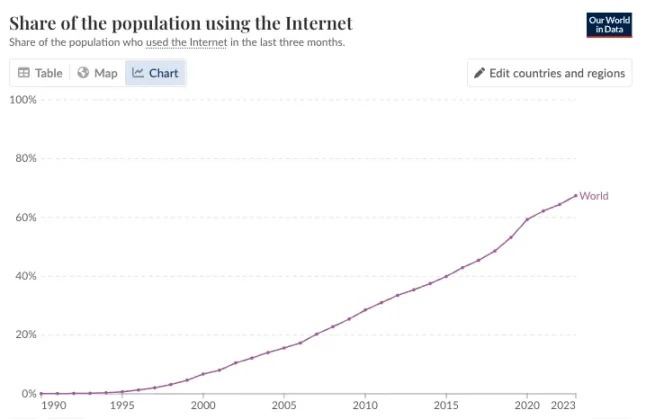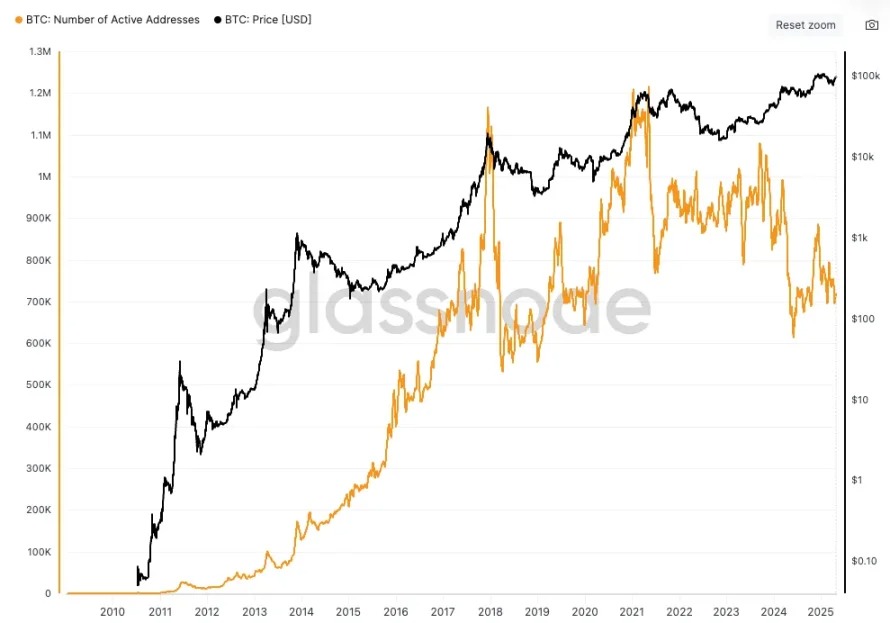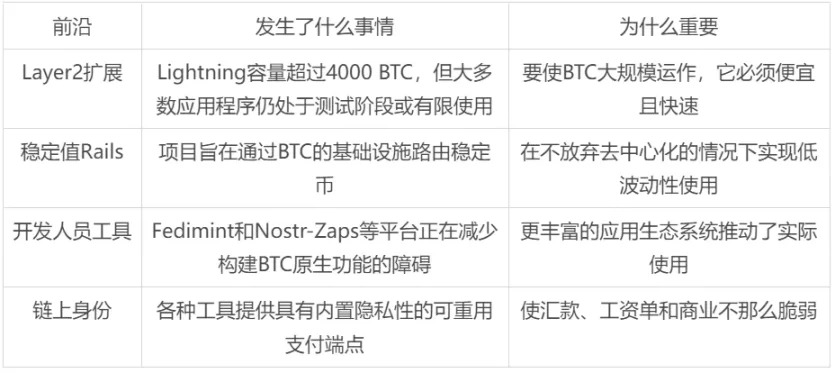BTC is still far from true mainstream application.
Source: cryptoslate
Translation: Blockchain Knight
"We are no longer in the early stages." This phrase has circulated widely in the Crypto Twitter community. Last week, 35,000 people attended the 2025 BTC conference, including BTC enthusiasts, U.S. senators, White House staff, BlackRock analysts, and even the imprisoned Silk Road founder Ross Ulbricht. The spot price of BTC has far exceeded $100,000, and BTC supporters are celebrating its "mainstream adoption."
However, behind the applause and price charts driven by ETFs lies a more sobering fact: BTC is still far from true mainstream application.
Despite BTC's price reaching an all-time high and Wall Street's increasing acceptance, only 4% of the global population holds BTC. In absolute numbers, about 337 million people hold BTC, which is only half the number of Snapchat users. Even when counting all alternative asset holders, the total number is only 659 million, still hundreds of millions fewer than the number of users in mainstream applications.
Despite its trillion-dollar potential, BTC remains a marginal tool in an ecosystem that is still developing.
BTC is still in the late 1990s internet stage
Comparing BTC's adoption curve to that of the early internet:

BTC in 2025 is like the internet before email became fully mainstream. It is an innovative field, but it has not yet reached ubiquity. Using a BTC wallet and reading articles like this is akin to having an AOL account or installing the latest version of the Netscape browser from a CD included with a computer magazine.
When BTC's adoption rate reaches 4%, it will be comparable to the state of the internet on New Year's Eve 2000. At that time, the world was afraid to leave their computers on when the midnight bell rang, fearing the Y2K bug would destroy civilization.
Back then, Nokia 3210 phones filled the streets and classrooms, basic images could only load line by line, downloading an album took an entire day, and job searches were handled by an online butler named Jeeves. Since then, the internet has undergone tremendous changes; similarly, if BTC wants to continue developing along the same path, its ecosystem integration still requires many transformations.
Some attendees at the Las Vegas conference may feel like latecomers. But from the statistics, they are still early adopters.

Internet adoption rate (Data source: Our World in Data)
Wall Street buys in, but the public does not use it
The narrative in the crypto asset space increasingly relies on institutional participation. Since the SEC approved ETFs in early 2024, over $44 billion has flowed into U.S. spot BTC ETFs. Pension funds, asset management companies, and family offices are using BTC as a hedge in their portfolios.
However, the everyday utility of BTC has not improved. The number of daily active addresses has dropped from a peak of 1.1 million in 2021 to nearly 700,000. Although traditional finance (TradFi) has legitimized BTC as an asset class, it has not translated into broader trading applications. Ross Ulbricht, as a symbol of BTC's rebellious roots, attended the conference, highlighting the contradiction between BTC as a political tool and as an institutional commodity.

BTC active address count (Data source: Glassnode)
Despite the increasing recognition of BTC, it still faces many obstacles on the road to widespread adoption:
Poor user experience: Setting up a wallet or managing mnemonic phrases is still not intuitive enough. A mistake can lead to permanent loss of assets.
High entry barriers: For underserved users, small deposit channels sound ideal, but exchange fees, regulatory checks, and slow transaction times undermine the user experience.
Unclear regulations: ETFs have brought legitimacy to BTC, but fragmented regulatory policies regarding wallets, mining, and business activities worldwide have introduced confusion and risk.
Low cultural awareness: Even in highly digital societies, BTC is often viewed more as a speculative asset rather than a payment or savings tool.
Foundational work and real agendas
Several initiatives are laying the groundwork for broader BTC application:

"BTC is no longer niche." WisdomTree analyst Dovile Silenskyte stated this in January. This may be true in the capital markets, but it has not yet been reflected in how people use money. Today, the price of one BTC has exceeded $100,000, far surpassing the average net worth of American households (excluding home equity). As BTC becomes increasingly collectible, its usability may decline unless Layer 2 solutions and broader access can reverse this trend.
To convert hype into actual financial inclusion, BTC supporters should reposition around the following points:
Prioritize real-world use cases: Highlight genuine examples such as income for freelancers in Argentina or remittances via the Lightning Network in East Africa, rather than just ETF inflows or celebrity endorsements.
Adopt meaningful metrics: Adoption should not be measured by market capitalization but should track metrics such as active wallet usage, Lightning Network liquidity, and merchant integration.
Design for marginal users: The most critical user groups live in economically unstable areas with limited banking services. BTC's promise is being tested in these regions, not at a glitzy conference in Las Vegas.
Clear policies: Regulatory consistency is more important than political theatrics. Frameworks like Europe's Markets in Crypto-Assets (MiCA) or targeted mining incentives can promote BTC adoption.
Celebration is just the beginning
BTC may have made headlines and breakthroughs in the hedge fund space, but the real test has yet to begin. Just as the internet's promise in the 1990s was only realized in the early 2000s with the advent of mobile phones, broadband, and user-friendly applications, BTC's global impact will depend on the innovations that follow the hype.
The total number of BTC wallets continues to grow, but usage of the Lightning Network, the number of active wallets, and the number of daily on-chain traders have not returned to historical highs. BTC prices have soared, but on-chain usage has not increased in tandem. We cannot be complacent and declare victory when the battle is far from over.
Therefore, while we can celebrate BTC's price surpassing the $100,000 mark like the celebration of the 1999 internet bubble, the internet's adoption was driven by innovations like smartphones (especially the iPhone). So, what similar innovations have emerged in the BTC space?
The Las Vegas summit was a celebration. But the revolution of BTC in payments, savings, remittances, and financial sovereignty will not be broadcast on television. It will unfold quietly, step by step, moving forward.
免责声明:本文章仅代表作者个人观点,不代表本平台的立场和观点。本文章仅供信息分享,不构成对任何人的任何投资建议。用户与作者之间的任何争议,与本平台无关。如网页中刊载的文章或图片涉及侵权,请提供相关的权利证明和身份证明发送邮件到support@aicoin.com,本平台相关工作人员将会进行核查。




